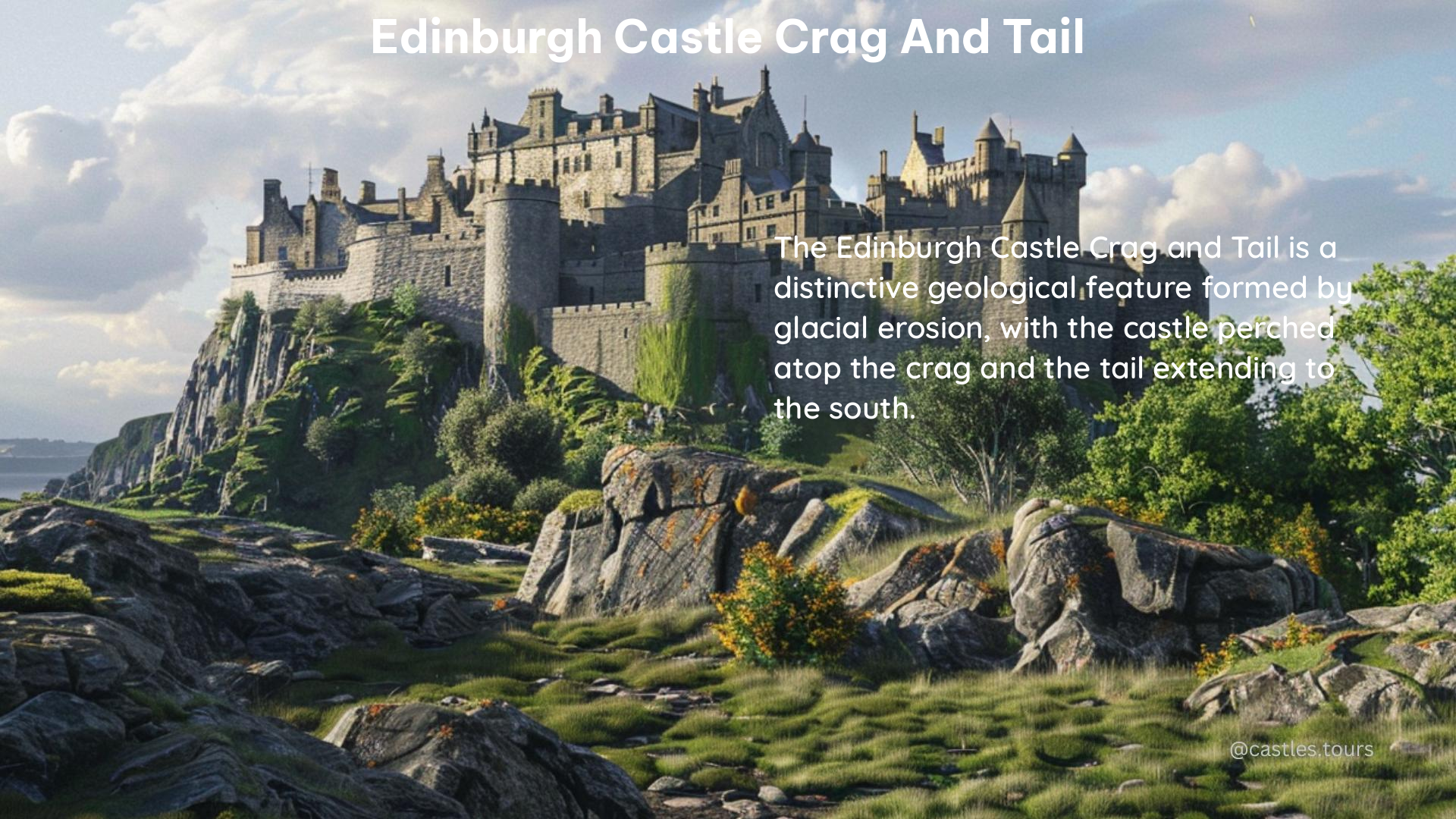The Edinburgh Castle crag-and-tail landform is a unique geological feature that has significantly shaped the city’s topography and architecture. This volcanic plug, formed millions of years ago, has played a crucial role in the development and defense of the historic Edinburgh Castle.
Formation and Geological History
The Edinburgh Castle crag-and-tail structure was created by glacial erosion over and around the Castle Rock, a volcanic plug that formed about 350 million years ago during the early Carboniferous period. The dolerite rock of the Castle Rock resisted erosion more than the surrounding sedimentary rocks, leaving a crag and tail formation.
The Castle Rock is the remains of a volcanic pipe that cut through the surrounding sedimentary rock. It cooled to form very hard dolerite, a coarser-grained equivalent of basalt. Subsequent glacial erosion sculpted the rock, leaving the crag and tail formation.
Impact on Topography

The crag-and-tail structure has significantly shaped the city’s topography. The Royal Mile, which stretches from the Castle to Holyrood Palace, rides on the tail of this structure, gradually decreasing in height and width away from the castle. This unique topography has influenced the development of the city, with the Old Town’s narrow closes and stairs reflecting the challenges posed by the terrain.
Architectural Influence
The use of local stone in Edinburgh’s architecture is prominent, and the city’s geological heritage is showcased in the buildings. The austere grey sandstone used for the finest buildings, much of which came from Edinburgh’s most important quarry at Craigleith, and the dark sets of the paved streets, made from dolerite quarried from local sill intrusions, reflect the influence of the crag-and-tail formation.
Hydrogeological Challenges
The Castle Rock’s dense volcanic rock has presented challenges for water supply. During sieges, the castle’s residents relied on the Fore Well, which could provide 11,000 liters of water, but this was often insufficient, leading to water shortages.
Defensive Advantage
The crag-and-tail formation has provided a defensive advantage, with the castle’s elevated position and rocky cliffs making it a formidable stronghold. The unique topography and geological features have contributed to the castle’s strategic importance throughout history.
Key Facts and Figures
| Fact | Value |
|---|---|
| Elevation of Castle Rock | 140 m (460 ft) above sea level |
| Depth of Fore Well | 34 m (through solid rock) |
| Water Capacity of Fore Well | 11,000 liters |
| Age of Castle Rock | Approximately 350 million years old |
The Edinburgh Castle crag-and-tail landform is a remarkable geological feature that has profoundly influenced the city’s development, architecture, and defense. Its unique formation and characteristics continue to captivate visitors and scholars alike, offering a glimpse into the rich geological history of this iconic Scottish landmark.
References:
-
Edinburgh Geological Society. (n.d.). Edinburgh’s Geological Sites. Retrieved from https://www.edinburghgeolsoc.org/edinburghs-geology/edinburghs-geology-sites/
-
Highly Allochthonous. (2010). Castle geology. Retrieved from https://all-geo.org/highlyallochthonous/2010/08/castle-geology/
-
Wikipedia. (n.d.). Castle Rock (Edinburgh). Retrieved from https://en.wikipedia.org/wiki/Castle_Rock_%28Edinburgh%29
-
ResearchGate. (n.d.). The Edinburgh Castle crag-and-tail. Retrieved from https://www.researchgate.net/publication/232934497_The_Edinburgh_Castle_crag-and-tail
-
Wikipedia. (n.d.). Crag and tail. Retrieved from https://en.wikipedia.org/wiki/Crag_and_tail
